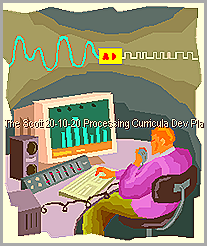 |
| Tres Mali Scott |
Regulating International Medical issues is difficult because of Intra-country variation in medical laws and ethics. As a result of International prison problems with transgendered people, i.e., genetic modifications that caused male physical features with female genitals and female physical features with male genitals. This is not the same as hermaphrodites, which is a birth defect of an individual born with both male and female genitals; genetic engineering genetic modification, or traditional breeding methods are under a microscope legally and ethically.
Genetic engineering, genetic modification or traditional breeding methods are intentional manipulation of an organism’s genome using DNA technology.What is a Genome?
- haploid set of chromosomes of an organism, or
- complete set of genetic material of an organism, or
- all of the biological information needed to build and maintain a living example of that organism.
The encoded DNA chain is make up of four chemical basis and the sugar 2′-dexoxyribose. The four chemical basis of DNA are:
- acdenine (A) & guanine (G) called purines and
- cytosine (C) & thymine (T) called pyrimidines
How Is Genetic Engineering, Genetic Modification, or Traditional Breeding Done?
Genetic engineering, genetic modification, or traditional breeding is for reproduction of life. The natural environment is used:
- Sex,
- Rape,
- artificial insemination
- Reproductive processes (flowers do not have sex).
And the laboratory.
People do the same things, use the same methods, and practice for good, bad, or neutral. Traditional breeding, genetic engineering, or genetic modification can also be dangerous. Used to genocide medically, medical war crimes, like Nazi Germany, & ethnic cleansing through biological warfare.
These methods can also:
- Heal,
- Manipulate out diseases,
- Manipulate out handicaps, and
- Manipulate out birth defects.
These methods can also maintain what has already been accomplished.
What is a Mutation?
Mutation, historically is thought of an alternation physically, biologically, or genetically of an organism in a negative manner:
- Malfunction,
- Maladaptive, or
- Inferior results.
An organism can also mutate to become:
- Higher functioning,
- More adaptive, or have
- Superior results.
Mutation occurs in the environment and is not through intentional manipulation or the desired results, if manipulation has occurred. Natural traditional breeding can also look like a mutation with higher functioning, more adaptive, or superior results.
